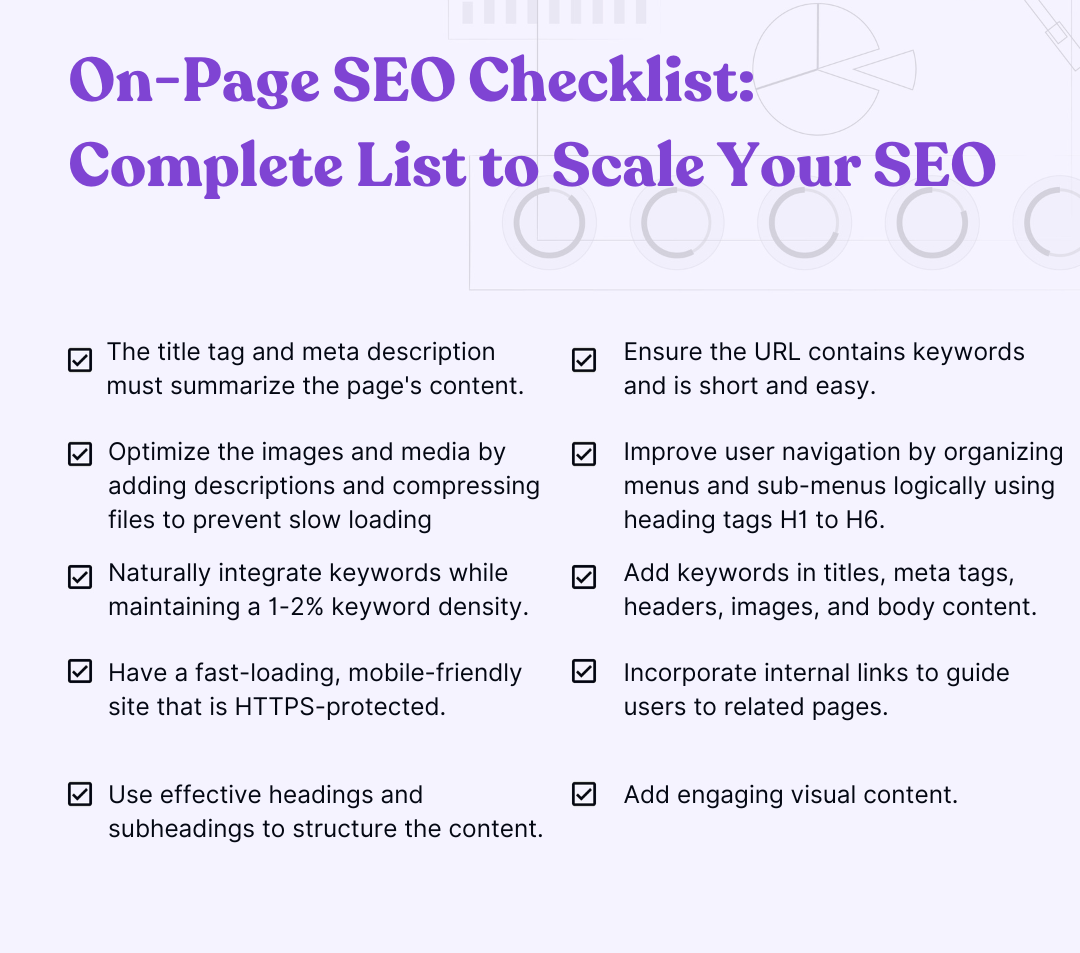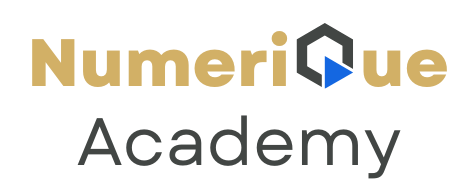On-page SEO is important for your web pages to rank higher in search engine results. It enhances user experience, boosts the relevance of content, and indicates to search engines that your web page is valuable.
If you’re writing blog posts and not optimizing them for SEO, you’re leaving a lot of traffic (and money) on the table. On-page SEO is all about making sure your content is structured, tagged, and presented in a way that search engines and readers can understand and love.
Here’s a practical, easy-to-follow On-Page SEO Checklist that will help you optimize every blog post for success.
1. Craft a Keyword-Rich, Compelling Title (H1)
Your blog post title is the first thing both Google and readers will see. Make it count.
Tips:
- Include your target keyword naturally
- Keep it under 60 characters so it doesn’t get cut off in search results
- Make it click-worthy, but avoid clickbait
Example:
Bad: “Blogging Tips”
Good: “10 Blogging Tips to Boost Your SEO Traffic in 2025”
2. Write a Clear, Concise Meta Description
The meta description doesn’t directly impact rankings, but it heavily influences click-through rates.
Tips:
- Use your primary keyword
- Keep it under 160 characters
- Make it enticing—think of it as your blog post’s elevator pitch
Example:
“Learn the exact on-page SEO techniques you need to rank your blog posts on Google in 2025. Step-by-step checklist included!”
3. Use Headers to Organize Your Content (H2, H3, etc.)
Headings make your content easier to read and help search engines understand the structure.
Tips:
- Use one H1 (your blog title)
- Use H2s for main sections
- Use H3s (and H4s if needed) for sub-points
- Include keywords where relevant, but don’t overdo it
4. Optimize Your URL Slug
Short, clean, and keyword-focused URLs perform better.
Tips:
- Remove unnecessary words (a, an, the, and, etc.)
- Use hyphens (-) instead of underscores (_)
- Keep it under 5 words if possible
Example:
❌ /how-to-do-on-page-seo-correctly-for-better-google-ranking
✅ /on-page-seo-checklist
5. Naturally Incorporate Keywords (Without Stuffing)
Strategic keyword placement helps Google understand what your content is about. But keyword stuffing can hurt rankings.
Where to include keywords:
- First 100 words
- Headings (where relevant)
- Image alt text
- Meta description
- Throughout the content, naturally

6. Add Internal and External Links
Linking builds authority and helps with user navigation.
Internal Links:
- Link to other relevant posts/pages on your site
- Helps reduce bounce rate and improve crawlability
External Links:
- Link to high-authority sources (studies, tools, etc.)
- Opens the door for possible backlinks and builds credibility
7. Optimize Images (Alt Text + File Size)
Images are more than just decoration—they impact SEO too.
Tips:
- Use descriptive alt text with keywords where appropriate
- Compress images for faster loading (use tools like TinyPNG)
- Use modern formats like WebP when possible
Example Alt Text:
“On-page SEO checklist infographic 2025”
8. Mobile-Friendly Formatting
Over 60% of Google searches come from mobile. If your blog isn’t mobile-friendly, your rankings will suffer.
Tips:
- Use responsive design
- Keep paragraphs short (2–4 lines)
- Use bullet points and white space to make scanning easier
9. Improve Page Speed
A slow blog = bad user experience = lower rankings.
Tools to test speed:
- Google PageSpeed Insights
- GTmetrix
- Web.dev
Quick Wins:
- Compress images
- Use lazy loading
- Minimize plugins if you’re using WordPress
- Use caching and a CDN (like Cloudflare)
10. Add a Call-to-Action (CTA)
SEO gets the traffic. A good CTA turns traffic into leads, sales, or subscribers.
Examples:
- “Download our free SEO checklist”
- “Sign up for weekly blogging tips”
- “Leave a comment if you found this helpful!”
Bonus Tip: Use Schema Markup (If Possible)
Adding structured data (schema) can help your content get rich results in search—like FAQs, reviews, and more.
Examples:
- FAQ schema
- Article schema
- Breadcrumb schema
You can add schema using plugins like Rank Math, Yoast, or manual code (for devs).
Final Thoughts
On-page SEO isn’t rocket science—but it is a game of consistency. Use this checklist every time you hit “Publish” and watch your content steadily rise in the search results. Increase the organic traffic to your website and get the authority that it deserves.

